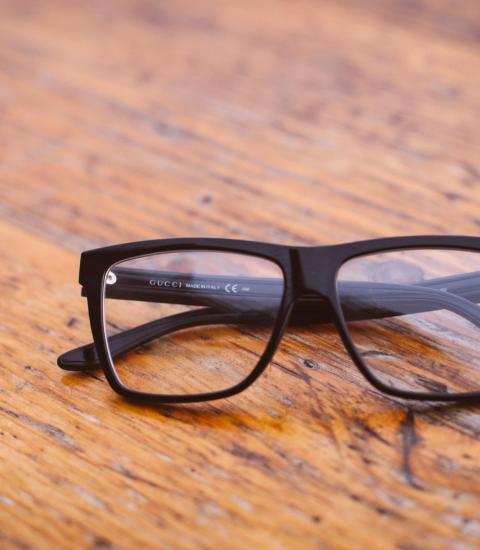
What does 20/20 vision mean?
If you have 20/20 vision, then it means that you can discern detail of 1 minute of an arc (1’) at a distance of 20 feet (6 metres).
In practical terms: imagine you are having your eyes examined and you are looking at the vision chart on the wall. The vision chart is set up at a distance of 20 feet (6m) from your eyes. The optometrist points to a letter “E” and asks you to state aloud what the letter is.
If the letter “E” has detail within it of 0.07 inches (1.75mm) and you can read it from a distance of 20 feet (6m), then you are able to read the 20/20 (6/6) letters:

If you can only read letters that are twice as big (with detail of 2’) from the same distance, then you would have 20/40 (6/12) vision. Similarly, 20/60 (6/18) letters have detail of 3’ (and are three times as big), and so forth.
This measure of vision is called “visual acuity”. It is important for reading books, labels, computer displays and signage.
Visual acuity is relatively easy to measure, and is specified as one of the criteria for obtaining licences (such as for driving a car or piloting a plane) and for acceptance into some occupations such as the military or the police.
Other visual abilities help us to see the world around us
We have many different visual abilities that help us to see the world around us. Consider the task of driving a car. We don’t only read street signs while we are driving. For example:
- We look for pedestrians, other vehicles and hazards on the road ahead. This is possible through our ability to detect contrast, distinguish colour and perceive motion.
- We detect other vehicles in the lanes around us by using our peripheral vision (visual fields) and by moving our eyes and head to look around us.
- Depth perception helps us to judge distances.
- We change our focus (accommodate) when we shift our gaze from objects outside the car (e.g. when looking at other vehicles) to objects within the car (e.g. looking at the speedometer or a GPS device).
- Our eyes adapt between dark and lit conditions when driving under the shade of trees on a sunny day, or when driving in and out of tunnels and car parks.
In her Glenn Fry Award Lecture on the topic of vision and driving, Professor Joanne Wood describes how there is very little evidence of a link between visual acuity and increased crash risk when driving. She proposes that other visual function measures, such as contrast sensitivity, are better predictors of driver safety1.
Vision beyond 2020
Visual acuity is relatively easy to measure.
It is also a relatively straightforward process to compare a person’s visual acuity to a pre-determined vision screening criterion, and, if they pass the criterion, then grant the person a job or licence.
But it is also only a very small component of our very complex visual system.
As we start this year 2020, perhaps it is time to think beyond visual acuity (“Do I have 20/20 vision?”) and embrace the myriad visual abilities that enable us to see the world around us.
References
1. Wood J. 2015 Glenn A. Fry Award Lecture: Driving toward a New Vision: Understanding the Role of Vision in Driving. Optometry and Vision Science. 2019;96(9):626-636.



